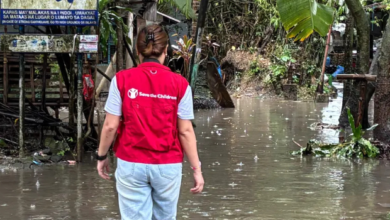World Red Cross and Red Crescent Day: Keeping Humanity Alive

Every year on May 8, the world observes World Red Cross and Red Crescent Day, also known as World Red Cross Day. This day commemorates the birth anniversary of Swiss entrepreneur Henry Dunant, the founder of the Red Cross, the world’s largest humanitarian organization. In 1901, Dunant was awarded the first Nobel Peace Prize and was instrumental in forming the International Committee of the Red Cross (ICRC).
The day provides an opportunity to highlight the vital humanitarian principles and activities of the Red Cross and Red Crescent Movement, which play a crucial role in assisting those affected by armed conflicts, natural disasters, and other emergencies.
History of World Red Cross and Red Crescent Day
After witnessing the horrors of the Battle of Solferino in 1859, Henry Dunant became a visionary advocate for humanitarian action. His efforts led to the establishment of nonprofit relief organizations, the drafting of the Geneva Conventions, and the founding of the International Committee of the Red Cross (ICRC) in 1863.
The Red Cross and Red Crescent Movement is now the largest humanitarian network in the world, comprising 192 National Societies. In 1948, World Red Cross and Red Crescent Day was officially established to honor Dunant’s birthday on May 8.
On this day, we reflect on the core ideals of the movement. Volunteers and staff around the world are recognized for their crucial humanitarian work. As new global challenges emerge, the need for impartial humanitarian response has never been more critical. The Red Cross stands firm in its belief that every individual can make a difference.
Throughout history, Red Cross and Red Crescent volunteers have been on the front lines of both man-made and natural disasters, delivering aid in the form of bandages, blood donations, stretchers, and rehabilitation tools.
World Red Cross and Red Crescent Day also shines a spotlight on health challenges like malaria, HIV/AIDS, and tuberculosis in underserved areas.
Theme of World Red Cross and Red Crescent Day 2025
The theme for 2025 is “Keeping Humanity Alive.” It honors the unwavering commitment of volunteers who risk their lives to protect human dignity and ease suffering. The theme underscores the real dangers aid workers face daily: armed conflict, natural disasters, and public health crises.
It also highlights the courage and compassion of volunteers and calls on people everywhere to support the movement, to ensure aid remains accessible, protected, and effective for those who need it most.
Significance of World Red Cross and Red Crescent Day
The Red Cross plays an essential role in disaster zones and conflict areas, and this day serves as a platform to raise awareness of its principles, mission, and efforts. It emphasizes the core values of compassion, humanity, and unity in times of crisis.
Below are some key points of its importance:
i. The struggle continues
Even after nearly 200 years since its founding, the need for neutral and impartial humanitarian aid remains critical. New and recurring global crises demand continued commitment to its mission.
ii. It honors the legacy
World Red Cross and Red Crescent Day celebrates the guiding principles of the movement and honors its historic role in supporting the world’s most vulnerable populations.
iii. It brings people together
With millions of active volunteers and members, the Red Cross and Red Crescent form one of the world’s largest global networks. The day unites people from all walks of life in a common purpose: to serve humanity, especially in times of unprecedented challenges.
How to Celebrate World Red Cross and Red Crescent Day
a. Donate Blood, Save Lives
A single blood donation can save multiple lives. Blood shortages are a global issue, and regular donors are essential to meet hospital demands. Those unable to donate can still help by encouraging others. Every drop counts.
b. Master the Art of First Aid
Emergencies can happen at any time, and first aid knowledge can make the difference between life and death.
Red Cross and Red Crescent societies offer training in CPR, burn care, bleeding control, and other life-saving skills. Anyone trained could become a hero in a critical moment.
c. Turn Awareness Into Action
Social media awareness is useful, but action creates real change. People can start conversations, share personal stories, or hold educational events to inspire others to join humanitarian causes.
Even organizing a session at school or work can spark dialogue. The more people are informed, the stronger the movement becomes.
d. Support Through Service
Volunteering is more than distributing aid, it’s about being present for those in need. This can involve helping in shelters, joining Red Cross initiatives, or supporting disaster-preparedness programs. Small acts, like assisting an elderly neighbor or volunteering at a food bank, create a ripple of kindness.
e. Raise Funds, Raise Hope
Financial support powers humanitarian missions. Hosting a fundraiser, whether it’s a bake sale, charity run, or online auction, can help provide emergency aid and medical assistance.
Small donations collectively have a big impact. Every contribution brings hope to someone in crisis.
f. Rise Above Differences
Henry Dunant believed that service transcends differences. The Red Cross’s mission includes maintaining neutrality and providing care to all, regardless of identity or affiliation.
On Dunant’s birthday, commit to reconciliation and peace, even in personal relationships. Seek common ground and heal wounds, just as Red Cross volunteers do on the field.
Conclusion
As we commemorate this day, let us reaffirm our commitment to humanitarian principles. The Red Cross and Red Crescent Movement shows us that our strength lies in togetherness and compassion. Let us stand united and support this noble mission to create a world where no one suffers alone and human dignity is always upheld.





